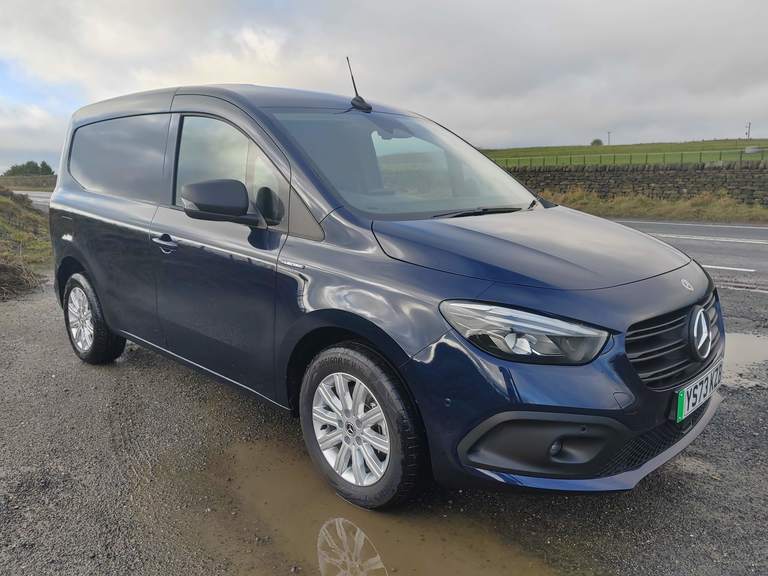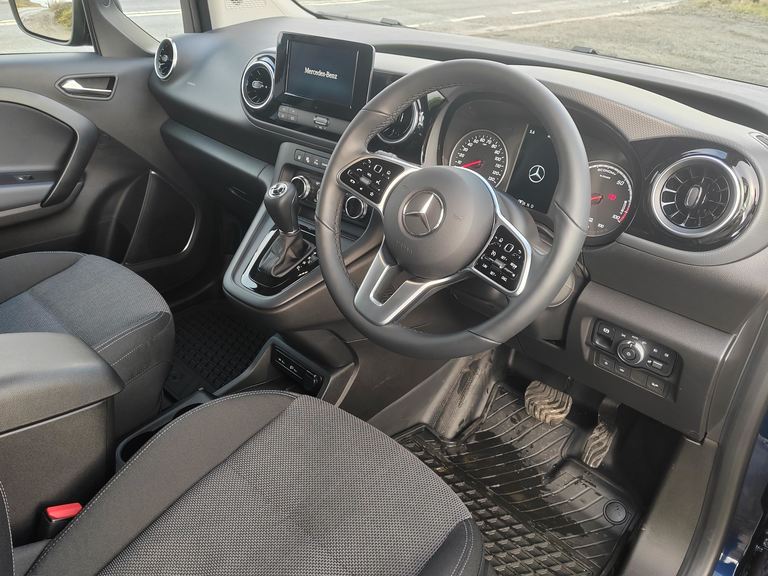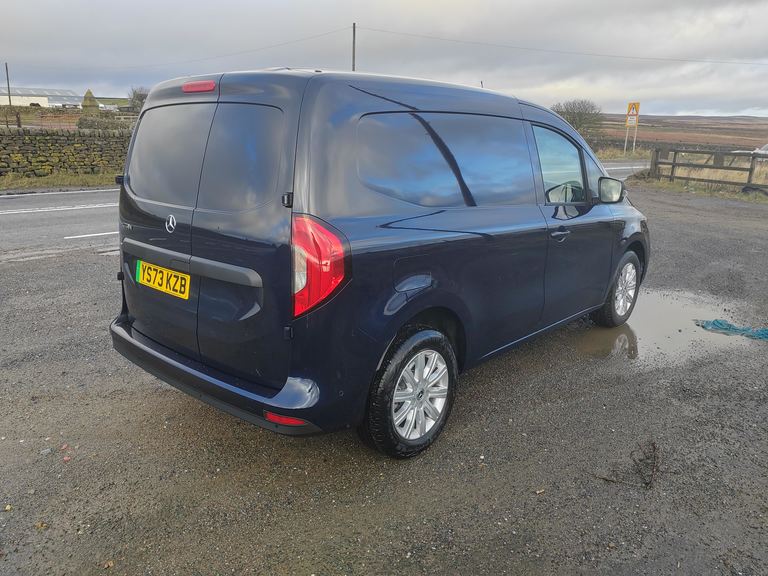Electric Vans / Electric Van Reviews / Mercedes-Benz eCitan
As small electric vans go, the excellent offerings from the Stellantis group such as the Peugeot e-Partner have had the segment pretty much all to themselves. But, with the arrival of the Mercedes-Benz eCitan (watch our video review), together with its platform sharing siblings from Renault and Nissan there’s now some very healthy competition. Van Expert Tim Cattlin has spent a week with the bearer of the three-pointed star…
In the interests of transparency, I’ll confess that I was already a huge fan of this van before the driver dropped it off at my door. I’ve already spent time with the diesel version of both the Citan and the almost identical Renault Kangoo and impressed is an understatement. These are truly excellent vans and in my role as a judge for a major industry award, they got my vote without hesitation. But, how well are they suited to electrification?



I always say that beauty is in the eye of the beholder, one man’s meat is another man’s poison etc., but I doubt if you’ll find many that would consider the eCitan to be an ugly duckling. The lines are smooth and from the front, the van proudly bears the Mercedes-Benz grille and the three-pointed star badge which are accompanied by some modern LED headlights on the Premium trim model (which also includes 16” 10-spoke alloy wheels and metallic paint). The bumpers (painted on Premium) blend into the rest of the body and somehow it all just comes together. The designers have done a great job.
As with the diesel version, there’s a choice of two body lengths which have typical dimensions for this class of van. The L1 has a load length of 1806mm, giving a volume of 2.9 cubic metres, and the L2 will take a load of 2150mm in length, the capacity of the load area being 3.62 cubic metres. Twin, asymmetric rear doors and a single side door give access to the load area, but there are options for a second side door and a tailgate.
Mercedes-Benz is being a little shy on issuing official payload figures for the eCitan, but I’m led to believe that the L1 can carry 544kg whilst the L2, with a greater GVM (Gross Vehicle Mass) rating, has a 722kg maximum. These aren’t fantastic numbers and are in no way class leading but, many small van operations don’t carry vast amounts of weight and it’s unlikely that these modest figures will lose the manufacturer many sales.
The van is fitted with a 45kWh battery pack which has no impact on the loadspace, and it fuels a 122hp electric motor which produces 245Nm of torque, available from the get-go, unlike diesel engines. That all-important range between charges is a healthy 176 miles on the WLTP Combined test cycle, quoted with the caveat about real world driving bringing this down, more on which later.
There are recuperation modes providing a choice of the braking effort provided by the motor, which also replenishes charge into the battery. At the time of writing, Mercedes-Benz has not quoted the battery charging times.
Here’s where Mercedes-Benz has made some significant changes to differentiate the van from the Renault Kangoo E-Tech and the Nissan Townstar Electric. You’ll find air vents and switchgear found in the manufacturer’s other vans and there’s a nice, leather-bound branded steering wheel which has a plethora of controls, designed to keep the driver’s hands on the wheel as much as possible. The 7-inch touchscreen runs on Mercedes-Benz’s MBUX architecture (rather than inheriting that of the Renault) which also benefits from voice control. It’s nice to see navigation as standard, too.
Drive is selected from a lever in the lower centre of the dash with an operation not dissimilar to a traditional automatic transmission. 122hp might not sound like much these days, but with that instant torque coupled with a light, unladen van the eCitan feels like there’s more than that available under the bonnet. As you’d expect, the van is very quiet with an almost total absence of wind or road noise. There’s no issue with visibility either, with a good view being available from a comfortable driving position.
The van is a pleasure to drive – not because of the performance of the drivetrain, but with its roadholding and handling. The steering is incredibly precise, making the van sure-footed and giving the driver the confidence to push it a little harder on country lanes. It almost resembles a small sports car in the way it
drives, and I’ll go as far as to say that, purely from a driving perspective, it’s the best van I’ve ever driven – and I’ve driven virtually every van that’s been on the market in the last 20 years.
Is it all great news? Well, not quite, and much of my criticism is aimed at that drive selector. I found it difficult to quickly choose reverse, more often than not the lever went too far back, Park being accidentally selected and the lever then had to be brought forward a notch to engage reverse drive. Not optimal when doing a three-point turn. Also, the selection of the recuperation modes seems a bit hit and miss.
There’s a button on the dash labelled ‘Dynamic’ – this allows the driver to select Comfort or Eco drive modes, the latter reducing power to maximise range. All well and good but, this reverts to a default Comfort setting when the vehicle is restarted, relying on the driver to remember to change it back to their preference. Mercedes-Benz isn’t alone in this, and it’s a real bugbear of mine, I’m pretty sure most drivers would prefer to change it when they are ready, not the van deciding for them.
Possibly my biggest concern is the accuracy of the range remaining display. The van was delivered to me with 150 miles remaining. I took it out for a 5 mile run and the range dropped by 15. Yes, it was a cool day, and, it’s hilly around where I live but there was no load in the vehicle and no traffic to contend with. In its favour though, on another trip which mostly consisted of gentle downhill gradients, a 15 mile trip saw the range drop by only 5 miles. Swings and roundabouts maybe, but rapid drops are disconcerting to a driver who may already be suffering with range anxiety.
This van is a great proposition for those who want a premium look and feel from their vehicle. Not only that, the driving experience is bordering on sublime. It’s not without its shortcomings, but at the time of writing in my opinion it’s the best small electric van out there. If you’re shopping around, it’s definitely worth looking at the Renault and Nissan equivalents which could be cheaper. But – they’re not a Mercedes-Benz, and that could be quite important for you…